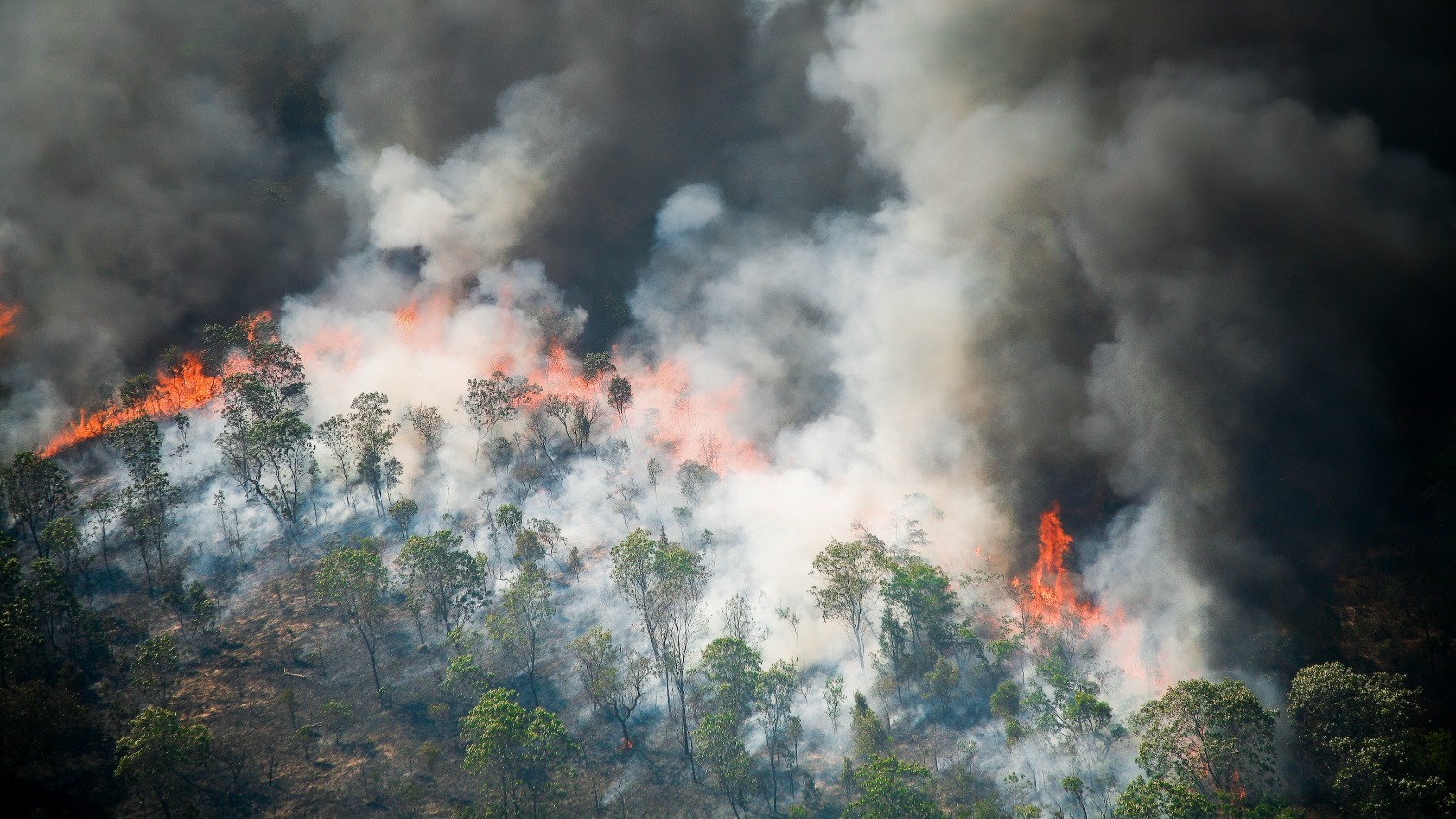Allergy Season is Getting Worse — Thanks to Climate Change

If you’re one of the millions of seasonal allergy sufferers in the United States, you might have noticed that your runny nose, itchy eyes and other symptoms are getting worse with each passing year. That’s because climate change is causing plants to produce higher concentrations of pollen for longer periods of time, according to one NC State expert.
Pollen is the fine powdery substance, typically yellow, produced by the male parts of a flower. It’s carried by wind, water, insects and other animals to the female parts of the same flower, or a different flower of the same species, in order to produce viable seed. When dispersed into the air, however, pollen also sometimes enters the nose, mouth and eyes of humans, causing some to experience allergic reactions.
The timing of pollen production in the U.S. varies based on temperature, region and type of plant. In North Carolina and other states across the Southeast, trees and grasses typically produce pollen between March and June, while ragweed produces pollen between August and November. This spring, trees began producing pollen about three weeks earlier than usual, in mid to late February, due to a mild winter and an early warming trend.
“Many plants rely on temperature cues for biological processes like pollen production,” said Kelly Oten, an assistant professor and extension specialist at the NC State College of Natural Resources. “Warmer spring temperatures cause plants to respond sooner, therefore causing the pollen season to start sooner. Meanwhile, warmer fall temperatures elongate the growing season, causing the pollen season to last longer.”
Pollen production is staggered over the season. But recent research shows that compared with 30 years ago, pollen production has been extended by about a month, starting about 20 days earlier and ending 10 days later. This has given plants more time to reproduce, causing pollen production by some trees to rise by 21%. Scientists estimate that pollen production of some plant species could increase by 250% over the next 60 to 80 years.
Oten said the extension of the pollen season and the increasing amounts of pollen are direct consequences of climate change. Over the last century, the burning of fossil fuels has increased the concentration of carbon dioxide in the atmosphere. This increase has not only brought rising temperatures, which have extended the growing season, but it’s also fueled photosynthesis, allowing plants to grow larger and produce more pollen.
“There is a correlation between rising atmospheric carbon dioxide and the ability of plants to produce more pollen and flower longer, as carbon dioxide is no longer a limiting factor in their growth,” Oten said.
Many plants are pollinated by insects or other animals, according to Oten. These plants produce small amounts of pollen because the pollination process is direct and targeted. But some plants, including many trees, rely on wind for pollination. It’s these plants that produce large amounts of the airborne pollen that cause allergic reactions.
In the Southeast, cedar and elm trees produce pollen early in the spring season, followed by maple, oak and pine trees. And while pine and oaks produce large amounts of pollen, the pollen grains are larger and typically not responsible for inducing allergic reactions. Hardwood species such as maple, elm and oak, on the other hand, produce smaller pollen grains. These grains can be more easily blown into the air by wind, meaning they’re also more easily inhaled by humans and more likely to induce an allergic reaction.
Ultimately, despite its ability to make humans feel miserable, pollen is vital to both human and environmental health, according to Oten. In fact, almost 80% of the 1,400 crop plants grown around the world for food and plant-based industrial products require pollination. “It’s important to remember this process is very important — from regeneration in our forests to the very core of our food production. Pollination is critical to our lives,” she said.


